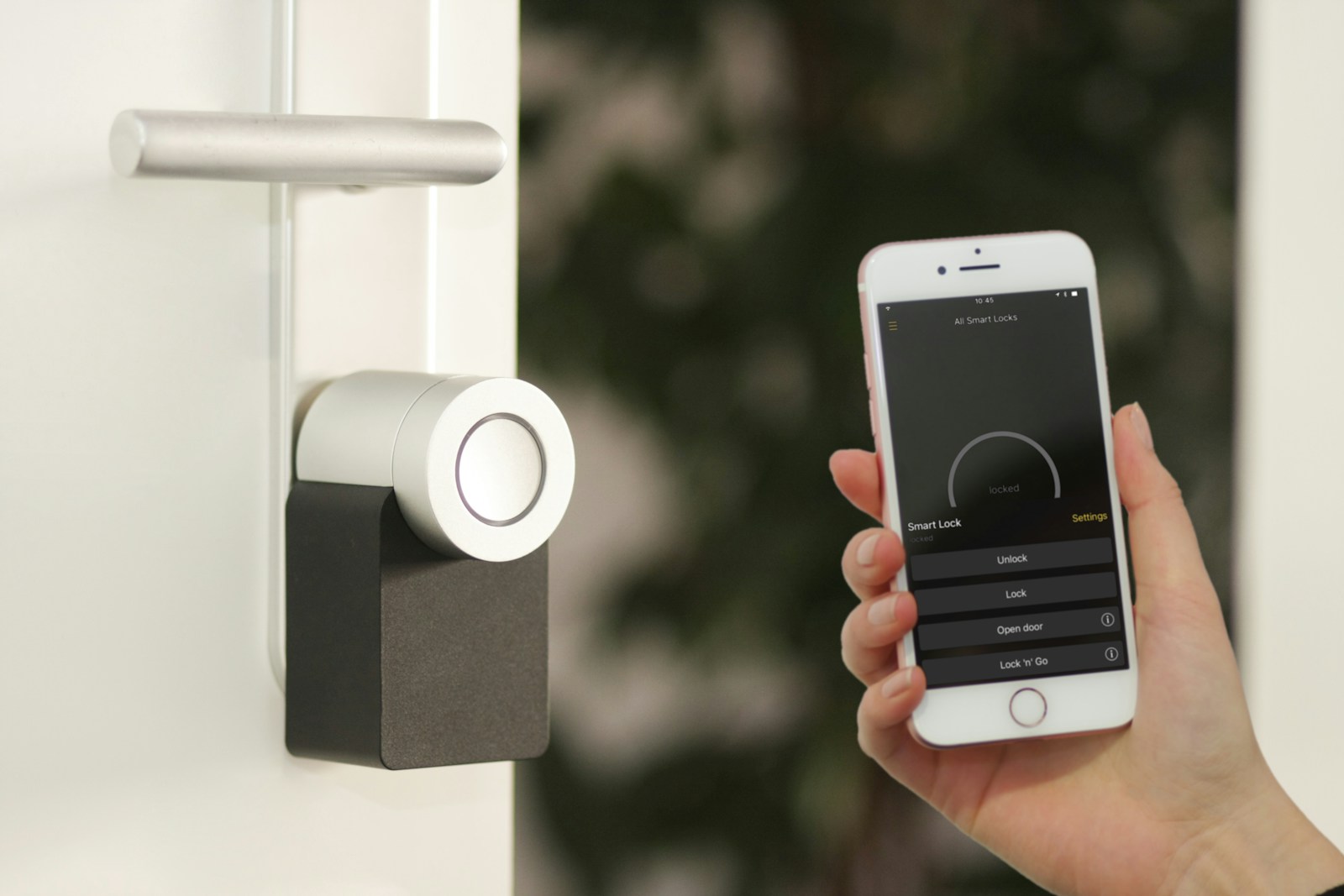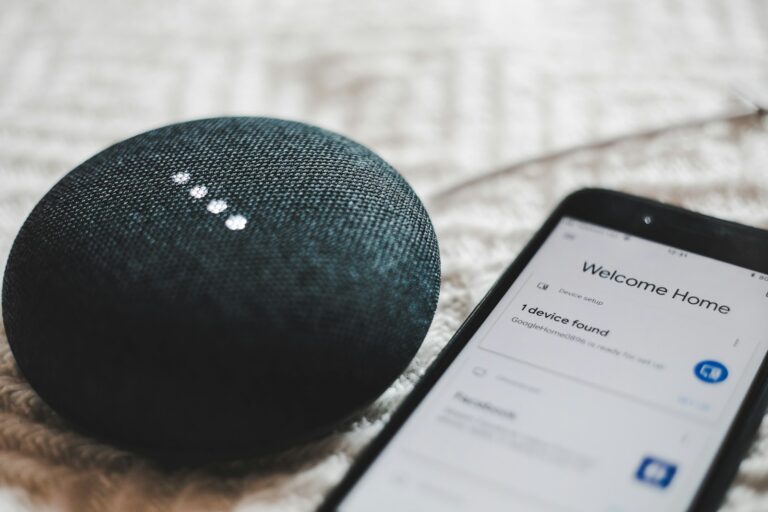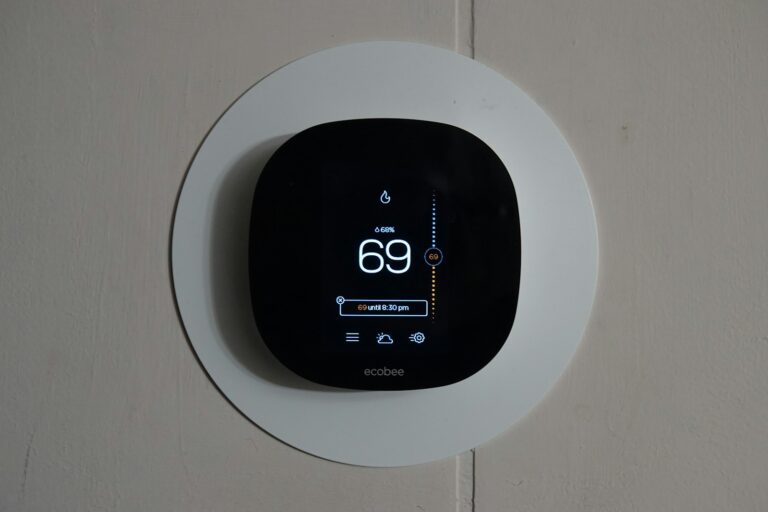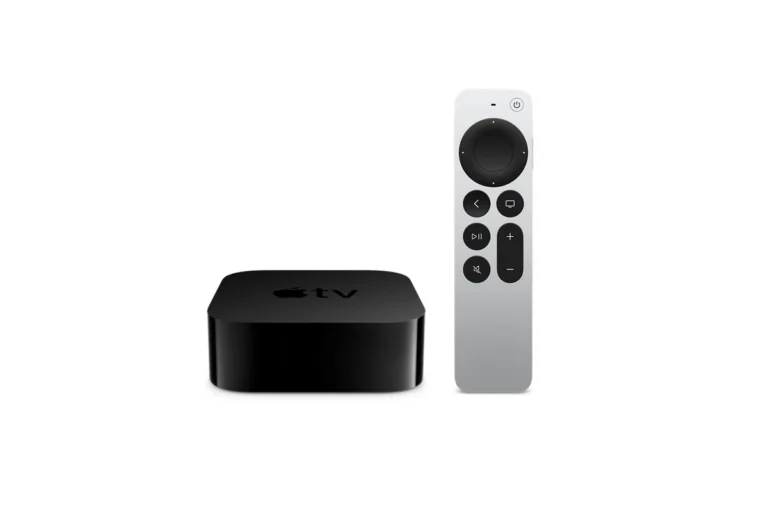
A modern smart home no longer demands a premium budget—or a professional installer. Thanks to falling sensor prices, new interoperability standards, and a booming second-hand market, you can add meaningful automation for less than the cost of a dinner out. Below is a practical, step-by-step roadmap that keeps total spend low while leaving plenty of room for expansion later.
1. Start With a Future-Proof Foundation (≈ $60–$90)
- Choose a universal hub or software gateway.
- SmartThings Station or SwitchBot Hub 2 — both under $80, Matter-ready, and double as Thread border routers.
- Home Assistant Green (≈ $99) if you’d rather run everything locally and avoid cloud lock-in.
- Check protocol compatibility. Matter and Thread now join Wi-Fi, Zigbee, and Z-Wave as budget-friendly, low-power options. A Matter-capable hub today saves you from buying proprietary bridges tomorrow.
Budget tip: If you already own an Amazon Echo (4th gen or later) or a Nest Hub (2nd gen), you may already have a free Thread border router and Matter controller—skip the standalone hub for now.
2. Solve One Real Problem First (≈ $15–$40)
Pick a single annoyance you face every day and automate that before touching anything else.
| Pain Point | Low-Cost Fix | Typical Cost |
|---|---|---|
| Lights left on at night | Zigbee or Thread smart bulb | $15–$20 each |
| Forgotten coffee pot | 15 A Wi-Fi smart plug | $9–$12 |
| Late-night stumbling | PIR motion sensor & bulb automation | $25 total |
| Window left open in summer | Contact sensor tied to HVAC off rule | $18 |
Starting with a laser-focused goal keeps early spending tiny and demonstrates immediate value to skeptical family members.
3. Add Free Automations With What You Own (≈ $0)
- Smartphone sensors: Most phones expose Wi-Fi presence, geolocation, and ambient light data that can trigger routines without extra gear.
- Voice assistants: Alexa Routines and Google Home Automations now support time-of-day, presence, and sensor triggers. Program them before buying anything new.
- IFTTT and Apple Shortcuts: Connect cloud-only services (e.g., weather alerts → smart blinds) without spending a cent.
4. Expand With High-Impact, Low-Cost Devices (≈ $20–$60 Each)
- Smart Thermostatic Radiator Valves (TRVs)
Cut heating bills up to 15 % by scheduling individual rooms instead of the whole house. - Sub-$30 Thread Door/Window Sensors
Double as security and HVAC efficiency helpers (turn off AC when a door is open). - Multi-Purpose Buttons
One battery-powered button can arm security, dim lights, and start “goodnight” scenes—no phone needed.
5. Use Energy Rebates and Second-Hand Markets
- Utility companies in many U.S. states offer $25–$75 rebates on smart thermostats or energy-monitoring smart plugs.
- Certified refurb outlets and local classifieds list last-year sensors for 40 % less than retail and still Matter-upgradeable.
6. Keep Everything Local—and Secure
- Local control (Home Assistant, Hubitat) protects privacy and keeps automations running during internet outages.
- Firmware updates may be manual on bargain devices; set quarterly calendar reminders to patch vulnerabilities.
- Network segregation: Place all IoT gear on a guest VLAN; many modern routers do this automatically.
7. Plan a Six-Month Roadmap Instead of a Shopping Spree
- Month 1: Hub + first automation (lights or plug).
- Month 2–3: Add sensors for occupancy and doors; link to security routines.
- Month 4–5: Integrate HVAC or radiant heat controls; capture energy rebates.
- Month 6: Optimize with dashboards, voice scenes, and robust backup power for your hub (USB-C battery).
Total outlay can stay under $250 with careful sequencing—and every gadget purchased plays a role in the final ecosystem.
Key Takeaways
- Start small, solve one pain point, and grow. The thrill of a motion-activated hallway light often convinces households to green-light further upgrades.
- Invest once in a standards-ready hub. Matter and Thread future-proof your setup and let you mix brands freely.
- Leverage what you already own. Phones, smart speakers, and free apps handle surprising amounts of automation.
- Buy devices that save money. Smart thermostats, TRVs, and energy-monitoring plugs pay for themselves quickly.
- Security and privacy aren’t optional. Local control, VLAN isolation, and regular firmware updates keep your bargain smart home safe.
With a clear roadmap, a handful of well-chosen gadgets, and the growing power of universal standards, you can build a responsive, efficient smart home for less than the price of a single flagship smartphone accessory—proof that convenience doesn’t have to be expensive.
Key Takeaways
- Choose an established protocol with a central hub to create a foundation for affordable and expandable home automation.
- Start with specific use cases that solve real problems rather than purchasing gadgets without a plan.
- Free apps and budget-friendly smart devices can transform your living space without requiring a significant financial investment.
Understanding Home Automation on a Budget
Home automation doesn’t have to empty your wallet. With some planning and smart choices, you can create an efficient system that works for your needs and financial situation.
The Basics of Home Automation
Home automation uses technology to control household functions automatically. This includes lighting, temperature, security systems, and appliances. The core components typically include a hub or controller, smart devices, and an app or interface to manage everything.
Smart home automation typically works through one of several communication protocols:
- Wi-Fi: Most common, works with your existing network
- Zigbee/Z-Wave: Creates a mesh network between devices
- Bluetooth: For short-range control
- Matter: Newer standard for better compatibility
For beginners, starting with simple devices is recommended. Smart plugs and bulbs offer immediate automation capabilities without complex installation. These devices can turn ordinary lamps and appliances into programmable smart devices.
Voice assistants like Amazon Echo and Google Home provide affordable entry points to control your smart devices through simple commands.
Evaluating Your Home Automation Needs
Before purchasing any equipment, assess what you actually need. Consider which aspects of your home would benefit most from automation:
Common automation priorities:
- Lighting: Save energy with scheduled or motion-activated lights
- Security: Door/window sensors, cameras, doorbell cameras
- Climate: Smart thermostats that learn your preferences
- Entertainment: Voice-controlled music, TV integration
Think about daily inconveniences or recurring tasks that could be simplified. Perhaps you frequently forget to turn off lights, or want to check security cameras while away from home.
Compatibility is crucial when evaluating needs. Not all smart home products work together seamlessly. Research which ecosystems (Google Home, Apple HomeKit, Amazon Alexa) will work best with your existing devices.
Start with areas that will provide the most immediate benefit rather than trying to automate everything at once.
Setting a Realistic Budget
Home automation can be achieved on nearly any budget. Many quality devices are available for under $100 that provide significant functionality.
Start with this basic budgeting approach:
- Set a total spending limit (monthly or project total)
- Prioritize essential devices based on your needs assessment
- Research affordable alternatives to premium brands
- Plan for expansion with compatible systems
Consider starting with one room or one type of automation rather than the entire home. A budget-friendly approach might begin with smart bulbs in the living room, then expand to other areas over time.
Watch for sales during major shopping events like Black Friday or Prime Day when smart home devices are often discounted significantly.
Remember that some automation investments can save money long-term. Smart thermostats and lighting can reduce utility bills, potentially offsetting their initial cost within months.
Getting Started with Smart Home Technology
Starting your smart home journey doesn’t have to break the bank. The right choices in platforms, speakers, and voice assistants can create a foundation that’s both affordable and expandable.
Choosing the Right Smart Home Platform
Selecting a compatible platform is the first crucial step in building a smart home on a budget. Popular options include Amazon Alexa, Google Assistant, and Apple HomeKit. Each has its strengths and limitations.
Amazon’s ecosystem offers the widest range of compatible devices, making it ideal for beginners looking to expand gradually. Google’s platform integrates seamlessly with Android devices and provides excellent voice recognition capabilities.
When choosing a platform, consider:
- Future compatibility with devices you plan to add
- Price points of starter devices
- User interface simplicity
- Integration with existing technology
Beginners should focus on platforms that offer affordable entry points like the Echo Dot or Nest Mini, which typically cost under $50 when on sale.
Relevance of Smart Speakers in Home Automation
Smart speakers serve as command centers for budget-friendly home automation. The Amazon Echo Dot and Google Nest Mini provide excellent starting points, often available for less than $50 during sales.
These compact devices can:
- Control lights, plugs, and thermostats
- Set timers and reminders
- Play music and news
- Answer questions
Smart speakers work best when placed strategically throughout the home. A single speaker can control multiple smart devices, eliminating the need for separate hubs in many cases.
For those on tight budgets, focusing on one room at a time makes the process more manageable. The living room or bedroom typically offers the most immediate benefits for automation beginners.
The Role of Voice Assistants
Voice assistants transform how people interact with their homes, making automation accessible without technical expertise. Alexa, Google Assistant, and Siri serve as the primary interfaces for most smart home setups.
These assistants can:
- Control devices through simple voice commands
- Create routines that trigger multiple actions simultaneously
- Provide information like weather and news
- Make purchases and place orders (especially with Amazon’s Alexa)
According to smart home guides, voice control eliminates the need to use apps for every interaction, making the smart home experience more seamless and intuitive.
Users can start with basic commands like “Turn off the lights” and gradually learn more complex interactions. Most assistants improve their recognition of individual voices over time, creating a more personalized experience.
Cost-Effective Smart Devices for Your Home
Building a smart home doesn’t have to break the bank. With strategic choices and starting with the right devices, you can create an automated home while staying within budget.
Affordable Smart Bulbs and Lighting Solutions
Smart lighting offers an excellent entry point into home automation with options for every budget. Brands like Sengled provide budget-friendly smart bulbs starting around $10-15 each, making them accessible for most homes.
Color-changing bulbs from Govee often cost less than premium brands while still offering millions of color options and scheduling features. These affordable alternatives connect to most major smart home platforms.
For multi-bulb setups, consider starter kits which typically offer better value than purchasing individual bulbs. Many budget brands now include features once exclusive to high-end options:
- Dimming capabilities
- Color temperature adjustments
- Voice control compatibility
- Scheduling and automation
Smart light strips present another cost-effective option for accent lighting, often priced between $20-40 for significant coverage. These strips can transform spaces with minimal investment.
Smart Plugs: An Inexpensive Component for Automation
Smart plugs rank among the most affordable and versatile smart home devices available. Priced typically between $10-25 each, these simple gadgets can transform any standard electrical device into a smart one.
Basic models allow for remote power control through smartphone apps. More advanced features include:
- Energy usage monitoring
- Scheduling capabilities
- Voice control integration
- Away mode simulation for security
Smart plugs work particularly well with lamps, fans, coffee makers, and seasonal decorations. By connecting these everyday items, you create automation without replacing existing equipment.
For larger homes, multi-packs of smart plugs often provide better value, with some four-packs available for under $40. Most budget-friendly options now work with popular voice assistants like Alexa and Google Assistant.
Utilizing Cost-Effective Motion Sensors
Motion sensors provide automation intelligence without the premium price of more complex systems. Basic smart motion sensors typically range from $20-40 but deliver significant functionality.
These affordable devices can trigger lighting, send security alerts, and initiate automated routines. Many budget options now include:
- Battery-powered operation for flexible placement
- Adjustable sensitivity settings
- Integration with major smart home platforms
- Push notifications to mobile devices
Motion sensors work particularly well in hallways, entryways, and bathrooms. They eliminate the need to manually control lights in transitional spaces and can enhance home security.
For outdoor applications, weather-resistant motion sensors cost slightly more but remain budget-friendly around $30-50. These can activate pathway lighting or security features when movement is detected.
The Benefits of Smart Thermostats
While initially more expensive than other smart devices, budget-friendly smart thermostats typically pay for themselves through energy savings. Entry-level models start around $80-130, significantly less than premium options.
The cost benefits come from optimized heating and cooling:
| Feature | Potential Yearly Savings |
|---|---|
| Smart scheduling | $50-100 |
| Occupancy detection | $30-70 |
| Remote adjustments | $20-50 |
Many utility companies offer rebates for smart thermostat installation, sometimes covering 50% or more of the purchase price. These incentives make smart thermostats surprisingly affordable for budget-conscious homeowners.
Basic models include features like smartphone control and programmable schedules. Even without advanced learning capabilities, these features deliver meaningful energy efficiency improvements and convenience.
Enhancing Home Security on a Budget
Protecting your home doesn’t have to drain your bank account. Modern technology offers affordable options that provide strong security while integrating seamlessly with other smart home features.
Strategic Placement of Security Cameras
Affordable security cameras have revolutionized home protection. The Wyze Cam V3 offers impressive features at under $36, including color night vision and weatherproof design for indoor or outdoor use.
For maximum coverage, homeowners should prioritize entry points:
- Front and back doors
- First-floor windows
- Driveways and garages
- Side yards with limited visibility
Motion detection capabilities reduce false alarms and storage needs. Many budget cameras offer cloud storage options with free basic plans and affordable premium features.
When positioning cameras, consider:
- Lighting conditions
- Power source availability
- Wi-Fi signal strength
- View angle (aim for 95-120 degree coverage)
Smart Locks and Doorbells for Enhanced Security
Smart locks transform standard doors into security checkpoints without major modifications. Models starting around $75 can integrate with existing deadbolts, saving installation costs.
Key features to look for include:
- Keypad entry for code access
- Smartphone control
- Temporary access codes for visitors
- Auto-lock functionality
Smart doorbells add another layer of protection by allowing homeowners to see and speak with visitors remotely. Entry-level video doorbells start around $60, offering motion detection and two-way communication.
These devices can be configured to send alerts when detecting movement near the door. Many operate on existing doorbell wiring, eliminating the need for professional installation.
Integrating Budget-Friendly Security Solutions
A comprehensive security system works best when devices communicate with each other. Homeowners should avoid using Wi-Fi as the main connection for security devices and create a separate network for IoT products.
Compatible hubs allow different devices to work together, triggering automated responses:
- Motion detection activating lights
- Door sensors locking additional entries
- Camera recordings starting when doors open
Free automation platforms like Home Assistant can coordinate budget devices without subscription fees. Setting up automatic routines increases security without adding costs.
Many affordable systems can be expanded gradually as budget allows. Starting with critical areas and adding components over time creates a robust security network without the upfront expense of professional installation.
Centralizing Control with Automation
Bringing all smart devices under one unified control system saves both time and money while making home automation truly convenient. This approach eliminates the need for multiple apps and creates a more coherent user experience.
The Necessity of Remote Control Interfaces
Remote control capabilities form the backbone of any budget-friendly smart home system. A centralized interface—whether through a smartphone app, voice assistant, or dedicated control panel—allows homeowners to manage all connected devices from anywhere.
Most affordable smart home devices now include remote access features through free companion apps. This eliminates the need to purchase expensive proprietary controllers.
Popular options include:
- Google Home or Amazon Alexa apps (free with device purchase)
- Smart home hubs like Samsung SmartThings ($70-100)
- Home Assistant (free, runs on existing hardware like Raspberry Pi)
Voice control through smart speakers provides an additional layer of convenience, letting users adjust lighting, temperature, and security features without opening an app.
Creating a Unified Smart Home Network
A cohesive network is essential for budget-friendly automation. Begin by ensuring all devices can communicate through compatible protocols like Wi-Fi, Zigbee, or Z-Wave.
Wi-Fi represents the most accessible starting point, as most homes already have routers. However, dedicated smart home protocols offer advantages:
| Protocol | Benefits | Price Range |
|---|---|---|
| Wi-Fi | No additional hub needed | Already in place |
| Zigbee/Z-Wave | Lower power consumption, better reliability | $30-100 for hub |
For those on tight budgets, choosing devices that work with a single ecosystem (Google, Amazon, or Apple) reduces compatibility issues. This approach lets you gradually expand your system without purchasing multiple hubs.
Multi-protocol hubs like Home Assistant can integrate disparate devices into one interface, making it possible to mix budget-friendly products from different manufacturers.
Making Smart Purchases
Building a smart home on a budget requires strategic purchasing decisions. Knowing where to find deals, considering used equipment, and planning for future expansions can significantly reduce costs while creating an effective automated home.
Where to Find Deals on Smart Home Devices
Many retailers offer significant discounts on smart home products during major shopping events. Black Friday, Cyber Monday, and Amazon Prime Day typically feature substantial markdowns on popular items like smart speakers and lighting systems.
Comparison shopping apps can help track price histories and alert you when prices drop. Camelcamelcamel for Amazon purchases and Honey for browser-based shopping provide valuable price tracking.
Some manufacturers offer certified refurbished products at 20-30% off retail prices. These items typically come with warranties and have been restored to like-new condition.
Budget-friendly smart home devices can often be found for under $100. Consider starting with:
- Smart plugs ($10-25)
- Motion sensors ($20-40)
- Video doorbells ($50-100 for basic models)
- Smart light bulbs ($15-30 each)
Second-Hand Smart Home Equipment
Second-hand marketplaces offer significant savings on smart home equipment. Platforms like eBay, Facebook Marketplace, and local classified ads frequently list gently used smart devices at 40-60% below retail prices.
When purchasing used smart devices, always verify that the items can be factory reset and aren’t tied to another account. Ask sellers to demonstrate that devices are working properly before completing the purchase.
DIY solutions can also reduce costs. Some enthusiasts make their own WiFi relay switches or repurpose older hardware with new software.
Consider these factors when buying used:
- Battery health for battery-powered devices
- Compatibility with your planned ecosystem
- Generation/version of the product
- Any subscription requirements
Budgeting for Future Expansions
Creating a phased implementation plan helps manage costs when building a smart home system. Start with a basic system focusing on one room or function, then expand gradually as budget allows.
Prioritize devices that offer the most immediate benefit. Smart thermostats often pay for themselves through energy savings, while security devices provide peace of mind.
Look for devices with open protocols like Zigbee or Z-Wave that work with multiple platforms. This prevents being locked into one ecosystem and allows for more flexibility when expanding.
Set aside a small monthly budget specifically for smart home purchases. Even $20-30 per month can fund a new device every couple of months, allowing for steady growth of your system.
Free smartphone apps can add smart functionality without additional hardware costs. These represent an excellent starting point before investing in physical devices.
Frequently Asked Questions
Setting up an affordable smart home involves choosing the right devices, integration methods, and implementation strategies. These common questions address key concerns for budget-conscious homeowners looking to embrace automation technology.
What are the most cost-effective devices to begin automating my home?
Smart lighting offers the best entry point for budget home automation. Smart bulbs under $100 can transform ordinary lamps into programmable fixtures without expensive wiring changes.
Smart plugs represent another affordable option. These devices convert standard outlets into programmable power sources for lamps, fans, and small appliances.
Motion sensors paired with smart bulbs create automatic lighting systems that save energy and enhance convenience. Many starter kits include multiple components at discounted prices.
Can I implement home automation without a professional installer to reduce costs?
DIY installation presents significant savings opportunities for homeowners. Most consumer-level smart devices are designed for simple setup with step-by-step mobile app guidance.
Wireless systems eliminate complex wiring requirements, making installation accessible to those with basic technical skills. Smart speakers like Amazon Echo or Google Home serve as affordable control hubs requiring minimal setup.
Video tutorials are widely available for specific products, addressing common installation challenges. Many manufacturers offer free customer support for troubleshooting.
What open-source solutions are available for budget-friendly home automation?
Home Assistant stands out as a powerful open-source platform that runs on affordable hardware like Raspberry Pi. This solution eliminates monthly subscription fees while offering extensive device compatibility.
OpenHAB provides another free alternative with strong community support and regular updates. Both platforms connect to numerous commercial devices while maintaining user privacy.
Node-RED offers a visual programming interface that simplifies automation rule creation without coding expertise. These solutions often work with inexpensive smart devices while avoiding proprietary ecosystem limitations.
How to integrate different brands of smart devices for an affordable, seamless home automation system?
Hub-based systems like SmartThings or Hubitat connect devices across multiple brands. Though requiring an initial investment, hubs eliminate the need for brand-matching and reduce long-term costs.
Voice assistants serve as affordable integration tools that work with numerous device brands. Google Home and Amazon Echo devices frequently support cross-brand functionality.
IFTTT (If This Then That) provides free integration services connecting different smart products through simple conditional statements. This service bridges compatibility gaps without additional hardware.
What are the best strategies to gradually upgrade to a smart home while staying within a budget?
Start with one room or function rather than attempting whole-house automation immediately. The lighting system makes an excellent starting point for most homes.
Look for multi-purpose devices that handle several functions. Smart speakers serve as entertainment centers, communication tools, and automation controllers simultaneously.
Take advantage of holiday sales and technology refresh cycles when manufacturers offer significant discounts. Creating a prioritized upgrade plan prevents impulse purchases of unnecessary devices.
Are there any hidden costs associated with DIY home automation solutions?
Power consumption increases with numerous always-on smart devices. Though individual impacts are small, collectively they may noticeably affect electricity bills.
Some systems require subscription services for advanced features. Free tiers often provide basic functionality, but premium capabilities may involve monthly fees.
Security concerns might necessitate network upgrades. Separating smart home devices onto dedicated networks can improve protection but may require additional equipment.
Battery-powered devices create ongoing replacement costs unless rechargeable options are selected. The convenience of wireless operation carries this maintenance consideration.




